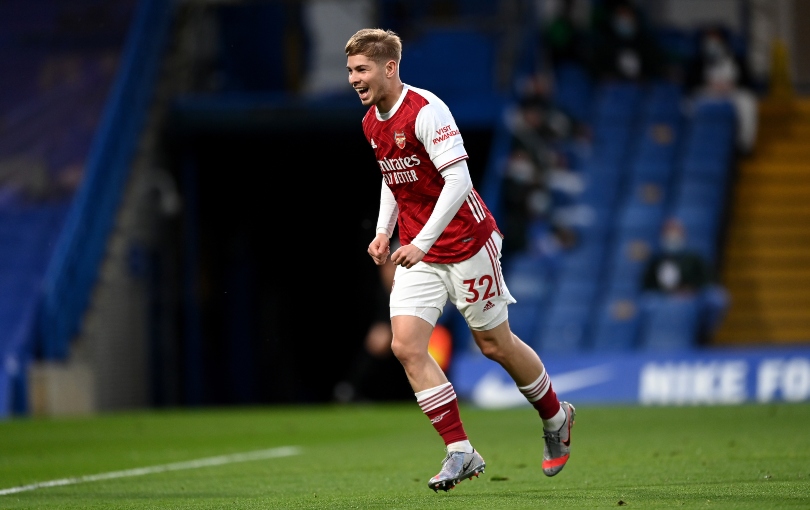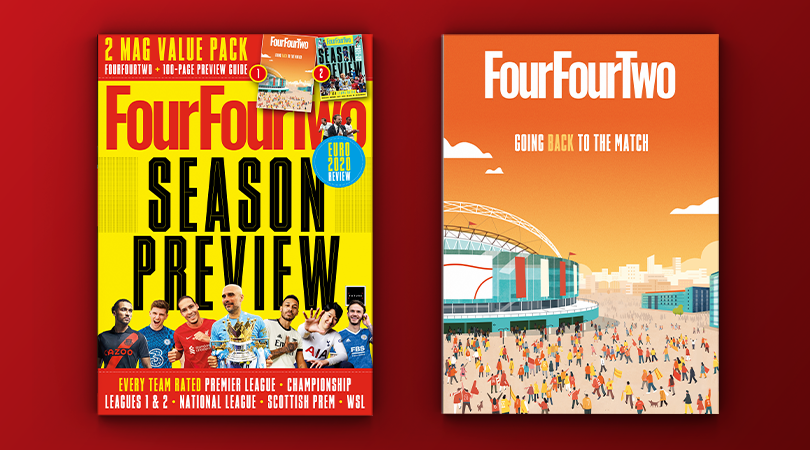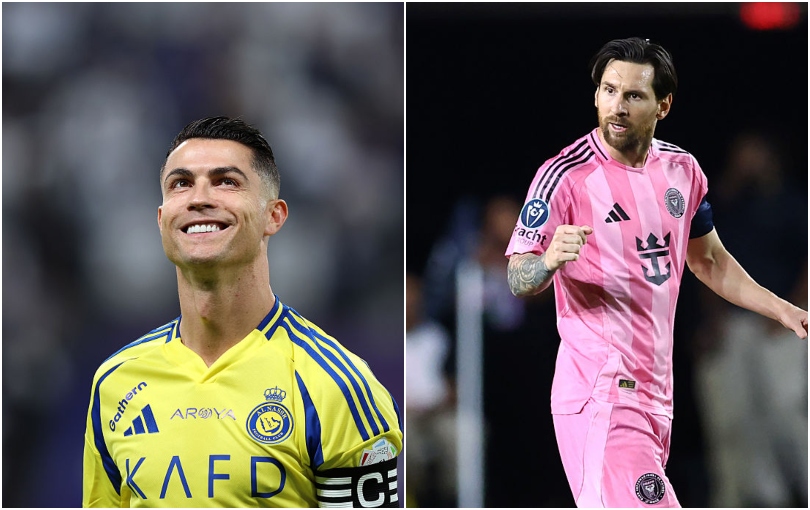Emile Smith Rowe and Jadon Sancho prove legendary squad numbers still matter to young stars
Smith Rowe has taken the vacant no.10 shirt at Arsenal, while Sancho coveted Cavani's no.7 at Manchester United

Emile Smith Rowe’s sixth birthday was still ahead of him when Dennis Bergkamp retired but he asked for the great Dutchman’s shirt. Or that is the interpretation many of us will draw. Smith Rowe is Arsenal’s new No. 10. Bergkamp was their finest.
Smith Rowe turns 21 on Wednesday. To those of his generation, the No. 10 may conjure thoughts of the rich talent of Mesut Ozil, the homegrown passer Jack Wilshere or Robin van Persie at his immaculate best as he scored 59 goals in two seasons. It probably does not represent the aberration that was William Gallas.
Meanwhile, Bukayo Saka, a still younger local, assumed the No. 7 last summer. To some, that means Robert Pires. To others, Liam Brady. To Ian Wright, a champion of Saka’s, perhaps it brings back memories of his old friend David Rocastle. If Arsenal’s No. 7 shirt is not quite as iconic as its Liverpool and Manchester United counterparts, it can be special nonetheless.

While Mikel Arteta worried that Smith Rowe, who was unburdened by comparisons when wearing 32, conferred pressure on himself, is the right sort: the pressure to belong in the company of his distinguished predecessors. Many an outsider should appreciate his choice: that Smith Rowe and Saka, two men who symbolise the best of the modern Arsenal and who could define the club for the next decade, want shirts with historic resonance is welcome.
One theory is that squad numbers are irrelevant, a marketing tool or both. Roy Keane claimed he was offered United’s No. 7 after Eric Cantona left, responded by saying he was not bothered and David Beckham took it instead, perhaps relishing the chance to follow in the lineage of George Best. Yet the suggestion that Jadon Sancho coveted it, and will presumably inherit it after Edinson Cavani goes, illustrates the enduring meaning of being Old Trafford’s No. 7. Maybe Cristiano Ronaldo’s gloss will rub off.
It is a status symbol, but it is more than that. In any case, football clubs, from the badge to the shirt to the number to the entity itself, are partly about symbolism and meaning. They are about being part of something that is bigger than any one individual or team or era. Saka, Smith Rowe and (seemingly) Sancho want to carry on traditions. Almost three decades into squad numbers in English football, the most prestigious still usually date back to the days of 1-11 (which Sean Dyche often seems to be trying to restore).
It can be seen in the way players gravitate from the higher numbers to those that carry a greater weight: Jack Grealish went from 40 to 10 for Aston Villa, Mason Greenwood from 26 to 11 for United, Dominic Calvert-Lewin from 29 to 9 for Everton, Harry Kane from 37 to 18 to 10 for Tottenham. Each, in turn, could encourage a younger generation to don numbers associated with Dwight Yorke or Ryan Giggs or Dixie Dean or Glenn Hoddle.
Get FourFourTwo Newsletter
The best features, fun and footballing quizzes, straight to your inbox every week.
And if the expansion of squads means elite clubs have too many high-class performers to fit into the first 11, both on the pitch and numerically, and it can create other, newer traditions, it nevertheless still feels better when they are lower numbers. Arsenal’s greatest player, Thierry Henry, wore 14; that Pierre-Emerick Aubameyang has the shirt now may mean future goalscorers claim it. Keane’s 16 at Old Trafford went to Michael Carrick while Bruno Fernandes has Paul Scholes’ 18. The 18 Kane briefly took at Tottenham had been Jurgen Klinsmann and Jermain Defoe’s, giving it a striking feel.
It makes for a welcome contrast with Serie A, which has embraced too many random high numbers. The Premier League only has a few equivalents. There may be a bunch of youthful full-backs on Merseyside dreaming of being Liverpool’s next No. 66 though some of us would prefer if Trent Alexander-Arnold would take the vacant 2 and follow in the footsteps of Phil Neal and Chris Lawler. At Manchester City, Phil Foden’s 47 is a tribute to his grandfather; otherwise, it would be pleasing if he inherited the departed Sergio Aguero’s No. 10.
Because while numbers no longer have their strict positional discipline and 10, which once automatically indicated an inside-left, can be a striker, a winger, a creator or indeed a No. 10, they can convey much. In picking 10, Smith Rowe tied himself to Arsenal’s past. It made him part of an institution in a way wearing 32 did not.
Subscribe to FourFourTwo today and get a FREE England Euro 96 shirt!
READ NEXT
OLYMPIC FOOTBALL What would a men's Team GB football side look like?
TOKYO 2020 Team GB Olympics 2020 football squad: full women's team
TEAM GB All the fixtures for Team GB's women's football team
Richard Jolly also writes for the National, the Guardian, the Observer, the Straits Times, the Independent, Sporting Life, Football 365 and the Blizzard. He has written for the FourFourTwo website since 2018 and for the magazine in the 1990s and the 2020s, but not in between. He has covered 1500+ games and remembers a disturbing number of the 0-0 draws.

